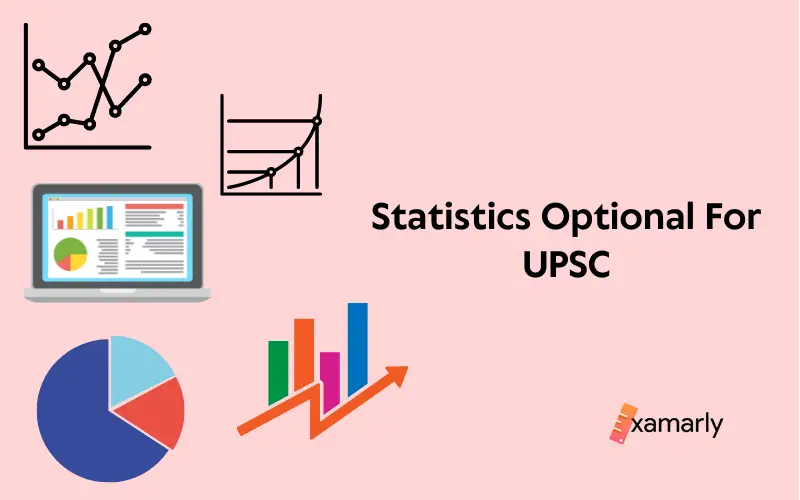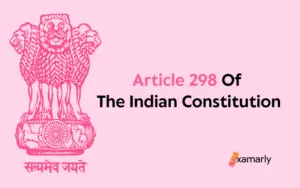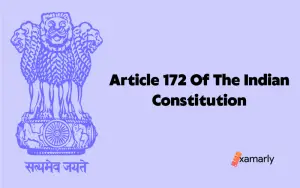Introduction To The Subject
Statistics is a branch of mathematics that deals with data analysis, presentation, and interpretation. The subject can be applied to many different topics, from social issues to logical ones. In this subject, you will learn how to interpret data, and use statistics to make decisions. You will also learn how to analyze and organize data. The syllabus focuses on a variety of topics, including sampling, statistics, probability, and estimation.
- Introduction To The Subject
- Comparison/Similarity With Other Optional Papers
- Advantages Of Statistics Optional for UPSC
- Statistics Optional for UPSC : Complete Syllabus
- Paper 1
- 1.Probability
- 2. Statistical Inference
- 3. Linear Inference and Multivariate Analysis
- 4. Sampling Theory and Design of Experiments
- Paper 2
- Mastering the subject from basics
- Importance of Academic Background
- What time Duration is required for preparation?
- Overlapping syllabus with GS
- Help with Essay paper
- Help in Interview
- Disadvantages Of Statistics Optional for UPSC
- Data/Scores Available
- Standard References
- Conclusion
- FAQs
Comparison/Similarity With Other Optional Papers
Statistics is a static subject. It is free from subjectivity because it is applied branch of mathematics. It is also less likely to change with time for its objective theoretical essence.
Candidates with Statistics optional for UPSC is likely to get benefitted by structuring data related to Geography, Anthropology, Social Sciences, Population Sciences in GS papers and in the interview round.
Advantages Of Statistics Optional for UPSC
Static: The syllabus for Statistics is mostly static and not subject to change over time. The candidate does not have to prepare from newly emerging topics for the optional paper.
Very little competition: Very little competition in a particular optional subject means higher chances of selection.
Scoring optional: Mathematical Statistics by its technical nature becomes highly advantageous in increasing scoring prospect.
Bias-free: The chief difference between mathematical, statistics optional for UPSC and any other subjective optional is the difference in theoretical aspect. UPSC Statistics deals with theory in one-way, minimizes subjective approach and thereby guarantees maximum score.
Informative: Statistics as a field of study makes the candidate familiar with data which he/she can put to good use when talking about demography, sociology, Geography, anthropology, etc. the candidate can embellish his/her GS answer well with structured data.
More opportunities: The candidate can also take Indian Statistical Service Examination as a further boost to his/her career.
Familiarity: Since Applied Statistics is a highly specialized subject, the candidate must have taken it in high college. Thus, he/she may be more likely to have mastered the fundamentals of Statistics. There is no need to build from scratch.
Statistics Optional for UPSC : Complete Syllabus
Paper 1
1.Probability
Sample space and events, probability measure and probability space, random variable as a measurable function, distribution function of a random variable, discrete and continuous-type random variable, probability mass function, probability density function, vector-valued random variable, marginal and conditional distributions, stochastic independence of events and of random variables, expectation and moments of a random variable, conditional expectation, convergence of a sequence of random variable in distribution, in probability, in path mean and almost everywhere, their criteria and inter-relations, Chebyshev’s inequality and Khintchine’s weak law of large numbers, strong law of large numbers and Kolmogoroff’s theorems, probability generating function, moment generating function, characteristic function, inversion theorem, Linderberg and Levy forms of central limit theorem, standard discrete and continuous probability distributions.
2. Statistical Inference
Consistency, unbiasedness, efficiency, sufficiency, completeness, ancillary statistics, factorization theorem, exponential family of distribution and its properties, uniformly minimum variance unbiased (UMVU) estimation, Rao-Blackwell and Lehmann-Scheffe theorems, Cramer-Rao inequality for single parameter. Estimation by methods of moments, maximum likelihood, least squares, minimum chi-square and modified minimum chi-square, properties of maximum likelihood and other estimators, asymptotic efficiency, prior and posterior distributions, loss function, risk function, and minimax estimator.
Bayes estimators. Non-randomized and randomized tests, critical function, MP tests, Neyman-Pearson lemma, UMP tests, monotone likelihood ratio, similar and unbiased tests, UMPU tests for single parameter likelihood ratio test and its asymptotic distribution. Confidence bounds and its relation with tests. Kolmogoroff’s test for goodness of fit and its consistency, sign test and its optimality. Wilcoxon signed-ranks test and its consistency, Kolmogorov-Smirnov two-sample test, run test, Wilcoxon-Mann-Whitney test and median test, their consistency and asymptotic normality. Wald’s SPRT and its properties, OC and ASN functions for tests regarding parameters for Bernoulli, Poisson, normal and exponential distributions. Wald’s fundamental identity.
3. Linear Inference and Multivariate Analysis
Linear statistical models’, theory of least squares and analysis of variance, Gauss-Markoff theory, normal equations, least squares estimates and their precision, test of significance and interval estimates based on least squares theory in one-way, two-way and three-way classified data, regression analysis, linear regression, curvilinear regression and orthogonal polynomials, multiple regression, multiple and partial correlations, estimation of variance and covariance components, multivariate normal distribution, Mahalanobis-D2 and Hotelling?s T2 statistics and their applications and properties, discriminant analysis, canonical correlations, principal component analysis
4. Sampling Theory and Design of Experiments
An outline of fixed-population and super-population approaches, distinctive features of finite population sampling, probability sampling designs, simple random sampling with and without replacement, stratified random sampling, systematic sampling and its efficacy ,cluster sampling, two-stage and multi-stage sampling, ratio and regression methods of estimation involving one or more auxiliary variables, two-phase sampling, probability proportional to size sampling with and without replacement, the Hansen-Hurwitz and the Horvitz-Thompson estimators, non-negative variance estimation with reference to the Horvitz-Thompson estimator, non-sampling errors.
Fixed effects model (two-way classification) random and mixed effects models (two-way classification with equal observation per cell), CRD, RBD, LSD and their analyses, incomplete block designs, concepts of orthogonality and balance, BIBD, missing plot technique, factorial experiments and 2n and 32, confounding in factorial experiments, split-plot and simple lattice designs, transformation of data Duncan?s multiple range test
Related – Physics Optional Syllabus For UPSC
Paper 2
1. Industrial Statistics
Process and product control, general theory of control charts, different types of control charts for variables and attributes, X, R, s, p, np and c charts, cumulative sum chart. Single, double, multiple and sequential sampling plans for attributes, OC, ASN, AOQ and ATI curves, concepts of producer’s and consumer’s risks, AQL, LTPD and AOQL, Sampling plans for variables, Use of Dodge-Romig tables. Concept of reliability, failure rate and reliability functions, reliability of series and parallel systems and other simple configurations, renewal density and renewal function, Failure models: exponential, Weibull, normal ,lognormal. Problems in life testing, censored and truncated experiments for exponential models.
2. Optimization Techniques
Different types of models in Operations Research, their construction and general methods of solution, simulation and Monte-Carlo methods formulation of linear programming (LP) problem, simple LP model and its graphical solution, the simplex procedure, the two-phase method and the M-technique with artificial variables, the duality theory of LP and its economic interpretation, sensitivity analysis, transportation and assignment problems, rectangular games, two-person zero-sum games, methods of solution (graphical and algebraic). Replacement of failing or deteriorating items, group and individual replacement policies, concept of scientific inventory management and analytical structure of inventory problems, simple models with deterministic and stochastic demand with and without lead time, storage models with particular reference to dam type. Homogeneous discrete-time Markov chains, transition probability matrix, classification of states and ergodic theorems, homogeneous continuous-time Markov chains, Poisson process, elements of queuing theory, M/M/1, M/M/K, G/M/1 and M/G/1 queues. Solution of statistical problems on computers using well-known statistical software packages like SPSS.
3. Quantitative Economics and Official Statistics
Determination of trend, seasonal and cyclical components, Box-Jenkins method, tests for stationary series, ARIMA models and determination of orders of autoregressive and moving average components, forecasting. Commonly used index numbers-Laspeyre’s, Paasche’s and Fisher’s ideal index numbers, chain-base index number, uses and limitations of index numbers, index number of wholesale prices, consumer prices, agricultural production and industrial production, test for index numbers-proportionality, time-reversal, factor-reversal and circular.
General linear model, ordinary least square and generalized least squares methods of estimation, problem of multicollinearity, consequences and solutions of multicollinearity, autocorrelation and its consequences, heteroscedasticity of disturbances and its testing, test for independence of disturbances, concept of structure and model for simultaneous equations, problem of identification-rank and order conditions of identifiability, two-stage least square method of estimation. Present official statistical system in India relating to population, agriculture, industrial production, trade and prices, methods of collection of official statistics, their reliability and limitations, principal publications containing such statistics, various official agencies responsible for data collection and their main functions.
4. Demography and Psychometry
Demographic data from census, registration, NSS other surveys, their limitations and uses, definition, construction and uses of vital rates and ratios, measures of fertility, reproduction rates, morbidity rate, standardized death rate, complete and abridged life tables, construction of life tables from vital statistics and census returns, uses of life tables, logistic and other population growth curves, fitting a logistic curve, population projection, stable population, quasi-stable population, techniques in estimation of demographic parameters, standard classification by cause of death, health surveys and use of hospital statistics. Methods of standardisation of scales and tests, Z-scores, standard scores, T-scores, percentile scores, intelligence quotient and its measurement and uses, validity and reliability of test scores and its determination, use of factor analysis and path analysis in psychometry.
Mastering the subject from basics
- Vision: Develop understanding from previous year question papers. It is advised that the candidate studies paper pattern thoroughly. Complete analysis of previous year papers comes in handy in preparing comprehensive study material.
- Time Management: Advisory is 5 hour long session per day for the optional subject preparation. For adequate study planning, build a schedule accordingly four months prior to UPSC Civil Services Exam.
- Optimization: Optimize your knowledge from the optional subject according to the need of the competitive exam. Practical application of theoretical components from the optional subject would add relevance in both essay and interview part.
- Coach yourself: Personalise your Coaching experience: Attempt mock test papers. Set up a decent test arrangement and complete mock tests in a time limit.
Importance of Academic Background
The UPSC examination process requires a year’s worth of preparation. But the preparation of highly specialised subjects as Statistics demands studious engagement from the candidate from the college graduation level. The syllabus for optional Statistics is equivalent to that of an Honours degree – higher than a bachelor’s degree but lower than a master’s degree. Statistics becomes one of the best subjects to choose as optional for a college graduate in Statistics.
What time Duration is required for preparation?
UPSC preparation is a demanding process and it requires a considerable amount of time. It requires a good understanding of your weaknesses and strengths. You need to make study plans to improve these areas. Then, develop a SWOT analysis to identify your opportunities and threats. Besides, you need to make sure that you spend a sufficient amount of time studying the subject and revising its concepts regularly.
In addition to prior academic background in Statistics, one should spend devote a total of five hours for Statistics optional everyday.
Overlapping syllabus with GS
The GS papers emphasize interdisciplinary inquiry and reflection on fundamental human issues. A Statistics optional candidate can back up his/her GS answers with analysis of data collected from various fields and issues.
Help with Essay paper
The concepts learned in Statistics are applicable to a number of different fields and issues. The candidate with Statistics optional for UPSC can analyze data from demography, ethnic studies, etc. and present data in his/her essay to get extra points.
Help in Interview
In interview round too, the candidate with Statistics background is most likely expected to interconnect various humane causes with data available on those subjects. Interdisciplinary inquiry can yield a very good score.
Disadvantages Of Statistics Optional for UPSC
Overspecialized nature of the subject: The number of aspirants taking this subject is very low, rarely exceeding 20 per cent. This is probably due to the subject’s specialised nature.
Limited availability of Study Materials: Comprehensive study materials and mock test papers for Statistics optional for UPSC are hard to find. One has to rely heavily on previous question papers and self study.
Almost nil overlap with GS papers: Apart from a citing a few data pieces, Statistics would have nil overlap with the GS papers, which are generally of a more subjective category.
Lack of good coaching faculty: Due to lack of coaching faculty in Statistics, the candidate cannot get experts’ feedback and polish his concepts in Statistics.
Data/Scores Available
| Year | No. of Candidates Appeared | No. of Candidates cleared | Success rate in percentage |
| 2015 | 5 | 1 | 20 |
| 2014 | 6 | 1 | 16.7 |
| 2013 | 6 | 1 | 16.7 |
| 2012 | 16 | 1 | 6.3 |
| 2011 | 19 | 1 | 5.3 |
| 2010 | 19 | 0 | 0 |
Standard References
The following books can be treated as fundamental toward building concise and clear concepts in Statistics.
- An Introduction to Probability Theory & Mathematical Statistics – V K Rohtagi
- Fundamentals of Applied Statistics – S C Gupta and V K Kapoor
- Fundamentals of Statistics (2 Vol.) – A M Goon, M K Gupta and B Dass Gupta
- Introductory Probability and Statistical Applications – Paul Meyer
- Fundamentals of Mathematical Statistics – A C Gupta and V K Kapoor
- Sampling Theory of Surveys with applications – P V Sukhatme & B V Sukhatme
- Sampling Techniques-William G. Cochran
Read Also – Statistical Institutions of India
Conclusion
The choice of an optional paper in UPSC is very important as it can determine your overall score in the Mains examination. The marks for the optional papers are worth about 28% of the total. The resultant score in the mains exam is very important because they are also important in determining your overall ranking. Graduates in Statistical Sciences can positively benefit from choosing this optional with due efforts.
FAQs
What is the weightage of optional subject in UPSC?
The optional subject bears a weightage of 28% to the grand total marks. Paper 1 and Paper 2 are both of 250 marks each and make a total of 500 for the optional.
2. Which optional subject is the most scoring?
There is no such subject. Choosing the optional subject should differ from individual to individual based on differences in preferences, abilities and specialisation.
3. How to score maximum in the optional paper?
Write answers like an expert on that particular subject. Make precise points with supporting evidences. Use visual appeal with plenty of diagrams and flowcharts.
4. What is the level of difficulty of Statistics optional?
The syllabus of every optional paper is based on bachelors degree level education on that particular subject. So, for Statistics which is a highly specialised subject, it is advised that the candidate must have at least a bachelor’s degree in Statistics.






